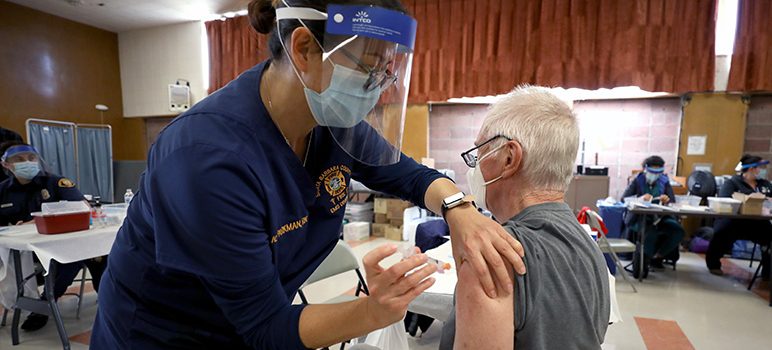As if we didn’t have enough to worry about, the coronavirus is mutating.
While scientists say that it’s not surprising that the virus is evolving, they’ve said it’s doing so more quickly than previously thought. And some of the variants that have been found around the world, like the one first identified in Britain, could fuel major increases in cases, because they’re more contagious, federal health officials have warned.
One of the new variants was found in California, by researchers in both Los Angeles and in the Bay Area, where it was linked to several large outbreaks in Santa Clara County. Carl Zimmer, a science columnist for the New York Times, discussed where things stand and what he’s watching going forward.
When you first wrote about the California variant—or CAL.20C, as researchers call it—scientists found it in half of samples they collected in Los Angeles County, up from 36 percent last month. Where do things stand now?
It’s barely over a week since we became aware of this variant, so scientists are still scrambling to identify it and to figure out how it’s trending. It will take a couple more weeks for things to start coming into focus.
What did scientists learn from that increase?
It’s possible that the variant is increasing because it has the right biology to spread faster than other variants. It’s still possible that it’s just getting more common because of chance. But it has mutations that are known to help viruses get into cells and escape antibodies, so we have to take it very seriously.
How does the California variant fit in with the discovery of other variants around the world? Is it more troubling? Less troubling?
We don’t know enough yet about the variant to make those comparisons. It could be less contagious or more. It could make vaccines less effective or it could have no impact. These variants appear to be cropping up everywhere—South Africa, the United Kingdom, Brazil, California and elsewhere. We’re witnessing a planet-wide evolutionary event.
In your reporting on the California variant, what was the most surprising or alarming thing you learned?
California has a fairly good system for surveillance of variants, thanks to some fantastic labs in the UC system and strong collaborations with public health departments. And yet this variant showed up in California in July and took off in November, but it didn’t come to anyone’s attention till the end of December. There will be more variants to contend with, and we need a better nationwide system to stay ahead of them.
What are you paying attention to going forward, both with the California variant and the spread of variants more broadly?
I’m starting a spreadsheet to keep track of all the variants. In California, I want to find out how this variant’s mutations change it, if at all, from its ancestors. I suspect that the scientists there are getting sick of my emails, in which I constantly ask for new results.
Copyright 2021 The New York Times Company


interviewing science columnist…
goodness gracious how far we have fallen
I hope yall are working on your plan Bs cause thats not anxiety, you are literally in the vicious cycle, rotating the bowl
And I hope for their sake you dont have kids, cause you think your winning
> As if we didn’t have enough to worry about, the coronavirus is mutating.
> While scientists say that it’s not surprising that the virus is evolving, they’ve said it’s doing so more quickly than previously thought.
TRANSLATION:
Another lockdown is coming. And then another. And then another. And then another. Etc. Etc. Etc.
The ruling oligarchy likes lockdowns.